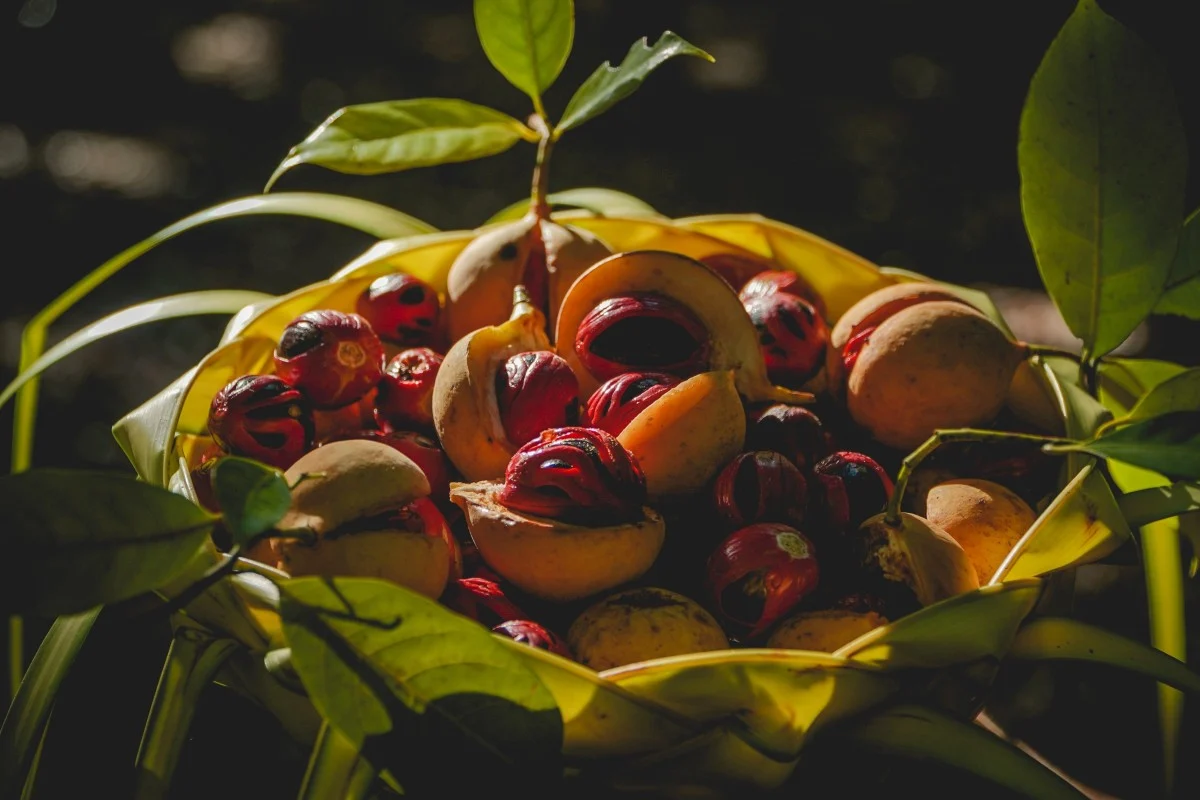Mace is often overshadowed by its close relative, nutmeg, even though both spices come from the same tree, Myristica fragrans. Nutmeg is the seed inside the fruit, while mace is the delicate, lacy coating that surrounds the seed. Despite their shared origin, nutmeg is far more common in kitchens worldwide, often grated into eggnog or béchamel sauce, while mace remains relatively unknown.
The process of harvesting these spices involves carefully removing the mace from around the nutmeg seed. Nutmeg forms a hard kernel, making it easy to grate, but mace is thin, flexible, and leathery, which makes it difficult to grate fresh. Attempts to grate fresh mace using various tools often fail, so many cooks prefer to use ground mace, stored in an airtight container in the freezer to maintain its aroma. Like all pre-ground spices, mace loses its flavor over time, so using it fresh is best when possible.
Mace is not only valued for its flavor but also for its use in alternative medicine, where it is believed to aid digestion, relieve insomnia, and reduce anxiety. Culinary-wise, mace pairs well with milk-based dishes. A comforting pre-bedtime drink can be made by warming milk with honey and a pinch of grated mace, which may help promote restful sleep. Mace also shines in spice cakes, often combined with cinnamon, ginger, and cloves to create warm, comforting flavors.
Whole mace pieces can be used alongside cinnamon sticks, cardamom, cloves, peppercorns, and cumin in dishes like braised mutton or goat with coconut milk, infusing rich aromas. Pain d’épices, a traditional French spice bread, often incorporates mace. Recipes vary widely: some call for ground spices, others for infusing whole spices in milk, with doughs that range from lean to buttery. Some recipes even use olive oil for moisture.
A classic pain d’épices recipe by American writer M.F.K. Fisher, from her 1937 essays in Serve It Forth, serves as inspiration. Fisher lived in Dijon, France, renowned for this spiced bread. Her recipe is a guideline, especially for the spices, allowing cooks to adjust to their taste. The bread is usually baked in loaf pans and served thinly sliced. When stale, it becomes perfect toasted with softened butter and a touch of jam or marmalade. Alternatively, mini muffin molds filled with a dollop of jam before baking create a delightful sweet core surrounded by moist, spiced dough.
READ MORE:
